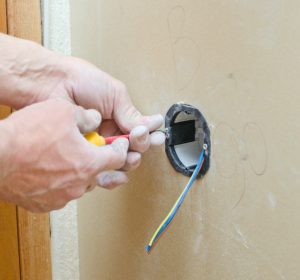Home remodels are becoming increasingly popular among homeowners. Removing walls, expanding the kitchen, or even building on additional rooms can make your home more livable or increase the sale value.
However, while putting in new cabinets or bathroom tile might seem simple, people often forget that most home renovation projects require attention to the electrical system. You can’t have more lights, outlets, or even a bigger kitchen with nicer appliances without making some major electrical changes.
Don’t put your home in danger by failing to make some crucial updates when renovating or adding on. Learn whether or not your renovation will require major electrical changes and what it could mean if you don’t get the right work done.
Renovations That Won’t Affect Electrical Systems
Some renovations won’t require any changes to your home’s wiring. For example, replacing windows (unless those windows are smart windows with electrical currents) usually does not affect any sort of wiring at all. The same goes for removing some walls if no wiring is present inside those walls.
Even changing some cabinets or putting in a new built-in closet might mean no disruptions at all to the wiring. However, when you are planning a renovation, even if you think it will not require any electrical changes, you should check with an electrician to make sure you’re not accidentally ignoring a potential problem.
For example, if you are putting in new kitchen cabinets, you might have wiring that powers the microwave, dishwasher, or range hood. Will those systems be affected by your new cabinet design? Only an electrician can let you know for sure.
Renovations That Mean More Outlets and Switches
Generally, even small or medium-sized renovation jobs mean moving outlets, creating more outlets, or replacing outlets with updated versions. For example, if you are replacing tile and fixtures in a bathroom, you may also need to replace ungrounded non-GFCI outlets.
Don’t take the easy road and simply install GFCI outlet covers without actually having them properly wired, as this is a huge safety risk. If you’re planning on adding new light fixtures, you may need additional switches to control them.
Whenever you will be adding more electrical service to a room, you need to factor the cost of an electrician into your small renovation project.
Renovations That Mean Adding Circuits
Sometimes larger renovations require adding entirely new circuits to your electrical panel. This is not a DIY job. Usually, adding new circuits is necessary when you:
- Change a room’s purpose. If you finish a basement storage room to be a wet bar, you should not piggyback off another room or even another part of the room. Adding lights, a fridge, and some outlets is enough to warrant an entirely new section at the breaker box.
- Add substantial lights to a room that did not have them. Can lighting adds numerous draws on an electrical system, and it’s much more complex, especially if you want some lights to be controlled with dimmers or separate switches.
- Expand the room. If you want to modernize your 1970s kitchen by adding a large preparation island, a second sink, double-wall ovens, and a large refrigerator, your kitchen will need substantially more electrical power than a simple range, sink, and small fridge. Each appliance may need its own circuit.
If you are not sure if your current wiring setup is safe for adding more appliances and outlets, don’t cut corners. Overloading a circuit can be both dangerous and irritating. Your breakers will flip more often, and you increase the risk of fire from the heat of the current. You could even see open sparks or flames at your breaker box.
Renovations That Require Updating Electrical Panels
Finally, some renovations are so major that they require refitting the electrical in a large portion of the home. Adding an additional room to your house is one of the main reasons why you’ll want to fully update your electrical panel, especially if you have an older home.
Building an addition demands more power from the panel, and some homes aren’t currently outfitted to draw that much power at once. Modern homes pull around 200 amps, but older homes might only have 100 or, worse, 40. Your electrician will need to make sure you have ample whole-house power supply.
If your current panel has no room for additional circuits, you’ll need to get a larger one or add a second one for the room addition. Changing out your electrical panel might seem like a costly problem added to the price of your renovation, but it’s a cost to take seriously. If you can’t afford the change, you can’t afford the renovation at all.
Don’t leave your electrical behind when planning even a small renovation. Taking shortcuts with electrical work is not worth the risk. Contact us at A to Z Electric Co. for more information about planning your home updates.

